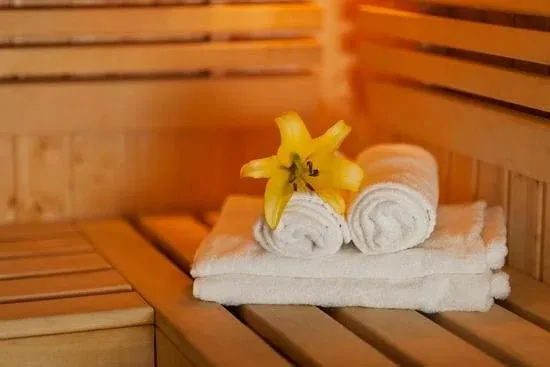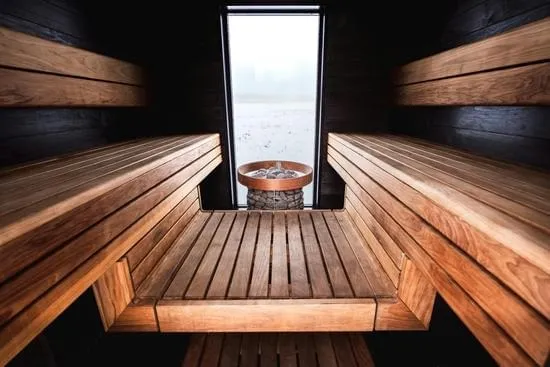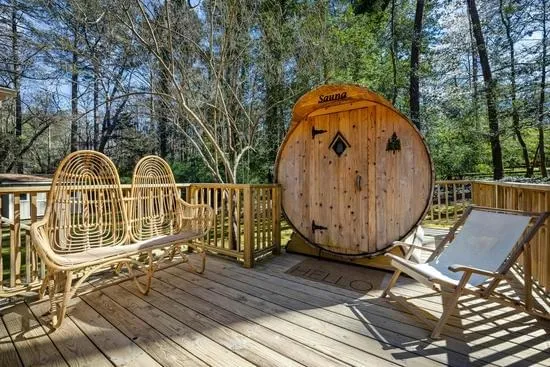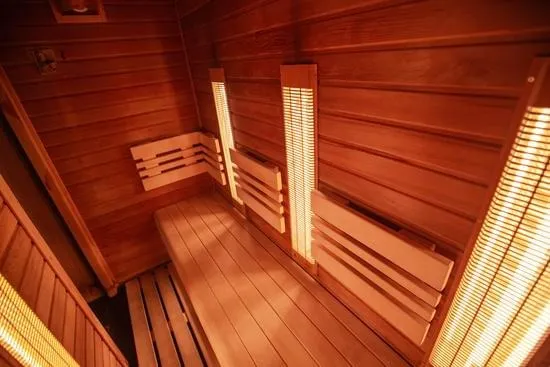How to Choose the Best Indoor Sauna for Your Home

Choosing an indoor sauna is one of the best investments you can make in your health and wellbeing. But with so many options available—from portable units to custom-built installations—the decision can feel overwhelming. After helping hundreds of people select their perfect sauna over the past 15 years, I've developed a systematic approach that makes this process straightforward.
When making a comparison between different heating technologies, it's helpful to understand how various systems deliver therapeutic benefits. Many people find that comparing infrared versus traditional heating methods helps clarify which approach aligns better with their wellness objectives and tolerance for heat intensity.
In this guide, I'll walk you through every factor you need to consider, from space requirements to long-term costs, so you can make a confident, informed decision that you'll be happy with for years to come.
Step 1: Assess Your Space
Before falling in love with any particular sauna, you need to know what your space can accommodate. This is the foundation of your decision-making process.
Measure Your Available Space
Grab a tape measure and record the dimensions of your potential sauna location:
- Width: Measure the widest point
- Depth: Measure from front to back
- Height: Measure ceiling height
- Door clearance: Note which way doors can swing
- Obstacles: Identify windows, outlets, vents
Popular Sauna Locations
Based on my experience, here are the most common and practical locations for home saunas:
Master Bathroom
This is my top recommendation. You're already close to a shower, which is convenient for pre and post-sauna routines. The existing ventilation usually works well, and the flooring is already water-resistant.
Spare Bedroom
Perfect if you have an extra room. You can create a dedicated wellness space with room for towel storage, a small refrigerator for water, and even a meditation corner.
Basement
Great for temperature control and privacy. Just ensure proper ventilation and consider adding a dehumidifier to manage moisture levels.
Garage or Outbuilding
Works well if properly insulated and climate-controlled. However, this location requires more extensive electrical work and weatherproofing.

Step 2: Determine Your Budget
Let's talk real numbers. Understanding the full financial picture helps you make a sustainable choice.
Purchase Price Ranges
| Price Range | Type | What You Get |
|---|---|---|
| $200-$600 | Portable | Basic heating, temporary setup, limited features |
| $1,500-$3,000 | Entry-level cabinet | 1-2 person, basic controls, standard wood |
| $3,000-$5,000 | Mid-range cabinet | 2-3 person, better materials, more features |
| $5,000-$8,000 | Premium cabinet | 3-4 person, high-end wood, advanced features |
| $8,000+ | Custom/Luxury | Any size, premium materials, custom design |
Installation and Setup Costs
Don't forget these additional expenses:
- Electrical work: $200-$1,500 depending on circuit requirements
- Flooring preparation: $100-$500 if needed
- Ventilation: $100-$400 for additional venting
- Delivery and assembly: $100-$500 depending on location
- Accessories: $50-$200 for thermometers, bucket, ladle, etc.
Operating Costs
Monthly expenses vary by sauna type:
- Infrared saunas: $10-$20/month (very efficient)
- Traditional electric: $20-$40/month
- Wood-burning: Variable, depends on wood prices
"Many people focus solely on purchase price and are surprised by installation costs. Budget for the complete project, not just the sauna itself. A $3,000 sauna might become a $4,500 project after electrical work and setup." - Industry best practice
Step 3: Choose Your Sauna Type
This is where personal preference meets practical considerations. Let's compare your main options.
Infrared Saunas
Best for: Heat-sensitive individuals, energy efficiency, low maintenance
Pros:
- Lower temperatures (120-140°F) feel gentler
- Faster heat-up time (15-20 minutes)
- Lower operating costs
- Simpler installation
- Deep-penetrating heat for muscle recovery
Cons:
- Less traditional sauna experience
- Can't add steam/water
- Some prefer higher heat of traditional saunas
For an in-depth look at this technology, read our complete guide to infrared saunas.
Traditional Finnish Saunas
Best for: Authentic experience, higher heat lovers, customization
Pros:
- Authentic sauna experience
- Can pour water on hot rocks for steam (löyly)
- Higher temperatures (150-195°F)
- More customization options
- Classic aesthetic appeal
Cons:
- Longer heat-up time (30-45 minutes)
- Higher energy consumption
- More complex ventilation needs
- Higher installation costs
Learn more in our article comparing traditional and infrared saunas.
Steam Rooms
Best for: Humidity lovers, respiratory benefits, skin hydration
Pros:
- High humidity great for respiratory health
- Lower temperatures (110-120°F)
- Excellent for skin hydration
Cons:
- More complex installation
- Requires steam generator
- Higher maintenance needs
- Not as portable or flexible
Step 4: Select the Right Size
Size dramatically affects both your experience and your budget. Here's how to choose wisely:
One-Person Saunas (3x4 feet)
Ideal for:
- Solo use
- Limited space
- Tight budgets
- Quick heat-up needs
Considerations: While cost-effective and space-efficient, you won't be able to stretch out fully or share the experience. Some people feel claustrophobic in very small units.
Two-Person Saunas (4x5 feet)
Ideal for:
- Couples
- One person who wants more room
- Most homes
- Moderate budgets
Considerations: This is the "Goldilocks" size—not too big, not too small. It's the most popular choice for home installations. Check out our two-person sauna guide for more details.
Three to Four-Person Saunas (5x6+ feet)
Ideal for:
- Families
- Entertaining
- Those who want extra space
- Larger budgets
Considerations: These create a more social wellness experience but require significant space and higher operating costs. Make sure you'll actually use the extra capacity.
Step 5: Evaluate Essential Features
Not all features are created equal. Let's separate must-haves from nice-to-haves.
Must-Have Features
Quality Heaters
For infrared saunas, carbon heaters provide better heat distribution than ceramic. For traditional saunas, look for heaters with appropriate wattage for the cabin size (typically 6-8 kW for home units).
Solid Construction
Check wood thickness (at least 3/4 inch), quality of joints, and door sealing. Poor construction leads to heat loss and higher operating costs.
Reliable Controls
Digital controls with timer functions and temperature presets make operation easier and more consistent. Look for easy-to-read displays and intuitive interfaces.
Safety Certifications
Ensure your sauna has appropriate certifications (ETL, CE, or similar). This matters for insurance, resale value, and most importantly, your safety.
Nice-to-Have Features
- Chromotherapy lighting: Color therapy enhances relaxation and wellness
- Built-in sound systems: Bluetooth speakers for music or meditation
- Reading lights: Extra lighting for reading or journals
- Oxygen ionizers: Improved air quality
- App connectivity: Remote control and session tracking
- Ergonomic backrests: Enhanced comfort during longer sessions
Wood Selection
Wood choice affects durability, maintenance, and user experience:
| Wood Type | Pros | Cons |
|---|---|---|
| Cedar | Aromatic, insect resistant, durable | More expensive, strong scent |
| Hemlock | Budget-friendly, neutral scent, hypoallergenic | Less aromatic, softer wood |
| Basswood | Soft, comfortable, low odor | Less durable, more expensive |
| Nordic Spruce | Traditional, good heat retention | Can be pricey, specific sourcing |
Step 6: Consider Installation Requirements
Understanding installation requirements helps you budget accurately and avoid surprises.
Electrical Needs
According to the National Fire Protection Association, proper electrical installation is critical for safety:
- Small infrared saunas: Standard 120V, 15-20 amp circuit
- Larger infrared saunas: 240V, 20-30 amp dedicated circuit
- Traditional electric saunas: 240V, 30-60 amp dedicated circuit
Always hire a licensed electrician. DIY electrical work on saunas is dangerous and may void warranties.
Ventilation Requirements
Proper air circulation prevents moisture buildup and ensures comfort:
- Intake vent near floor (pulls in fresh air)
- Exhaust vent near ceiling (removes humid air)
- Gap under door for air circulation
Flooring Considerations
Your floor must be:
- Level and structurally sound
- Able to support 500-800 pounds
- Water-resistant (tile, vinyl, sealed concrete)
- Easy to clean
Step 7: Research Brands and Read Reviews
Not all sauna manufacturers are equal. Here's what to look for:
Red Flags to Avoid
- No safety certifications
- Extremely low prices that seem too good to be true
- Poor customer service or unresponsive support
- Limited warranty (should be at least 5 years for quality units)
- Thin wood construction (under 1/2 inch)
- No clear return policy
Green Flags to Look For
- Comprehensive warranties (5+ years on heating elements)
- Responsive customer support
- Detailed installation manuals and videos
- Replacement parts readily available
- Positive reviews from verified customers
- Company has been in business for several years
Questions to Ask Before Buying
- What's included in the warranty and for how long?
- Is installation included or can you recommend installers?
- What are the exact electrical requirements?
- Can I see specifications for wood thickness and quality?
- What's your return policy if it doesn't fit or meet expectations?
- Are replacement parts available and at what cost?
- Do you offer any financing options?
Step 8: Think About Long-Term Use
Your sauna should fit your life not just today, but years from now.
Lifestyle Changes to Consider
- Family growth: Will you need more capacity in a few years?
- Health conditions: Are there medical factors that might change your needs?
- Moving plans: Is this sauna portable enough to take with you?
- Resale value: Does this increase your home's value?
Maintenance Commitment
Be realistic about maintenance:
- Low maintenance: Infrared saunas with minimal cleaning needs
- Moderate maintenance: Traditional electric saunas
- High maintenance: Wood-burning saunas, steam rooms
If you're not committed to regular cleaning and upkeep, choose a low-maintenance option. A neglected sauna becomes unsafe and unpleasant quickly.
Need Help Choosing?
Get personalized recommendations for your space and budget.
Making Your Final Decision
You've done your research—now it's decision time. Here's my recommended process:
- Narrow to 2-3 options that meet your space, budget, and feature requirements
- Request detailed specs and talk to customer service for each
- Check recent reviews from the last 6 months
- Verify warranty terms and installation requirements
- Calculate total project cost including all extras
- Sleep on it for at least 24 hours before purchasing
Remember, the best sauna isn't always the most expensive or the one with the most features. It's the one that fits your space, meets your health goals, and fits comfortably in your budget while being something you'll actually use consistently.
Special Considerations for Small Spaces
If you're looking for a more portable option or want to test the waters before a larger investment, explore our guide to portable indoor sauna benefits and options.
Don't have much room? Don't worry. Read our guide on small space sauna solutions for creative options that work in apartments and tight spaces.
Next Steps
Once you've chosen your perfect sauna, focus on proper installation and developing a consistent wellness routine. The health benefits of regular sauna use compound over time—consistency is more important than duration. For essential guidance on getting started safely, review our beginner's guide to safe sauna practices.
If you're still unsure or want personalized guidance, reach out to us. We're always happy to help you find the perfect wellness solution for your home.
Ready to Find Your Perfect Sauna?
Get expert guidance tailored to your space, budget, and wellness goals. We'll help you make the right choice.
Frequently Asked Questions
Size depends on the number of users. One-person saunas need 3x4 feet, two-person models require 4x5 feet, and three to four-person units need 5x6 feet or larger. Always measure your space and account for door clearance and ventilation.
Infrared saunas are better for those sensitive to high heat, offer lower operating costs, and require simpler installation. Traditional saunas provide the authentic Finnish experience with higher temperatures and optional steam. Your choice depends on personal preference and health considerations.
Budget $1,500-$3,000 for entry-level models, $3,000-$5,000 for mid-range options, and $5,000+ for premium saunas. Factor in installation costs ($500-$2,000) and monthly operating expenses ($10-$30).
Essential features include quality heaters, durable wood construction, good insulation, reliable controls, and proper safety certifications. Optional features like chromotherapy, sound systems, and app connectivity enhance the experience but aren't necessary.
References
- National Fire Protection Association. "Electrical Safety Standards for Saunas"
- Consumer Reports. "Home Sauna Buying Guide"
- American Institute of Architects. "Residential Sauna Design Standards"




